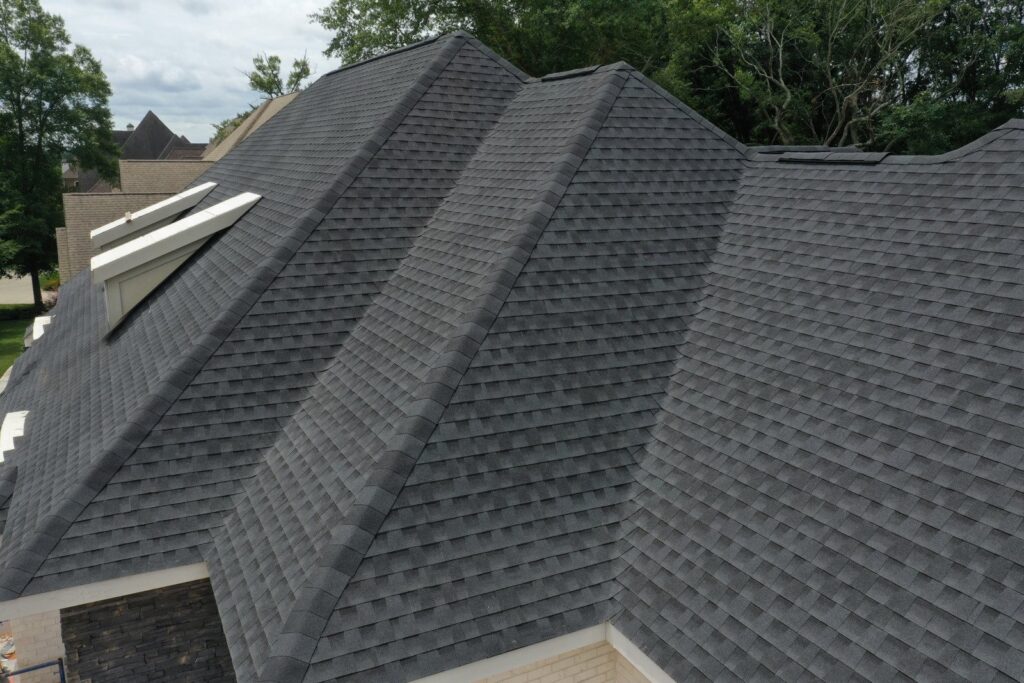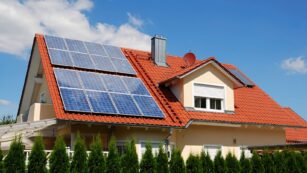
If you’re a homeowner, you’ve likely wondered about the lifespan of your shingle roof. A roof is a significant investment; understanding how long it will last can help you plan for future maintenance and replacements. In this article, we will explore the factors that affect the longevity of a shingle roof, the typical lifespan of different types of shingle roofs, signs of aging and wear, ways to extend a roof’s lifespan, and when it’s time for a replacement.
1. Introduction
A shingle roof is one of the most common roofing systems in residential properties. It consists of overlapping individual shingles that create a protective layer against the elements. However, over time, shingle roofs may deteriorate due to various factors, leading to the need for repairs or replacement.
2. Understanding Shingle Roofs
Shingles are typically made from materials such as asphalt, fiberglass, or wood. These materials provide durability and protection against weather conditions like rain, snow, and sunlight. Shingle roofs are known for their affordability, versatility, and ease of installation.
3. Factors Affecting the Lifespan of a Shingle Roof
Several factors can impact the lifespan of a shingle roof. It’s essential to consider these factors to determine how long your roof is likely to last.
– Quality of Materials
The quality of the shingles used in the roof plays a significant role in determining its lifespan. High-quality materials are more resistant to wear and tear, UV rays, and harsh weather conditions, thus lasting longer.
– Installation Techniques
Proper installation techniques are crucial for the longevity of a shingle roof. Poor installation can lead to premature roof failure and a shorter lifespan. It’s essential to hire experienced and skilled roofing professionals for the installation.
– Climate and Weather Conditions
The climate and weather conditions in your area can impact the lifespan of your shingle roof. Extreme temperatures, heavy rainfall, snow, and high winds can accelerate the wear and tear, reducing the roof’s lifespan.
– Maintenance and Care
Regular maintenance and proper care are vital for the longevity of any roof. Neglecting maintenance tasks like cleaning gutters, removing debris, and addressing repairs promptly can lead to more significant issues and a shorter lifespan for your shingle roof.
4. Typical Lifespan of Different Types of Shingle Roofs
The lifespan of a shingle roof can vary depending on the type of shingles used. Let’s explore the typical lifespan of some common types of shingle roofs:
– Three-Tab Shingles
Three-tab shingles are a popular and economical choice for residential roofing. On average, they have a lifespan of 15 to 20 years. However, with proper maintenance and favorable weather conditions, they can last up to 25 years.
– Architectural Shingles
Architectural shingles, also known as dimensional or laminate shingles, offer a more aesthetically pleasing appearance than three-tab shingles. They have a thicker, multi-layered design, which enhances their durability. Typically, architectural shingles can last anywhere between 20 to 30 years or even longer.
– Impact-Resistant Shingles
Impact-resistant shingles are designed to withstand hail, strong winds, and other impacts. They are made with reinforced materials, such as fiberglass or rubber. These shingles have a longer lifespan compared to traditional asphalt shingles and can last around 30 to 50 years, depending on the specific product and manufacturer.

It’s important to note that these are general estimates, and the actual lifespan of a shingle roof can be influenced by the factors mentioned earlier.
5. Signs of Aging and Wear
Over time, a shingle roof will show signs of aging and wear. It’s crucial to be aware of these indicators to assess the condition of your roof. Here are some common signs to watch out for:
– Curling and Cupping
Curling occurs when the shingle edges start to turn upward, while cupping is when the shingles take on a concave shape. Both curling and cupping are signs of weathering and can indicate that the shingles have reached the end of their lifespan.
– Missing or Damaged Shingles
If you notice missing or damaged shingles, it’s a clear sign of wear. Shingles can become loose or torn off due to strong winds, falling debris, or aging. Missing or damaged shingles expose the underlying layers to potential water damage and require prompt attention.
– Granule Loss
As shingles age, they may lose granules, the protective layer of fine particles on their surface. You might notice granules accumulating in gutters or downspouts. Granule loss can leave the shingles vulnerable to UV rays, leading to faster deterioration.
– Leaks and Water Damage
If you experience water leaks or notice water stains on your ceiling or walls, it indicates a roofing issue. Leaks can occur due to damaged or deteriorated shingles, compromised flashing, or inadequate roof ventilation. Prompt action is necessary to prevent further damage to your home’s interior.
Regular inspections and maintenance can help detect these signs early on, allowing for timely repairs and potential extension of your shingle roof’s lifespan.
6. Extending the Lifespan of a Shingle Roof

While the lifespan of a shingle roof is influenced by various factors, there are steps you can take to extend its durability. Here are some practices to consider:
– Regular Inspections and Maintenance
Schedule regular roof inspections by a professional to identify any issues or potential problems. Addressing minor repairs promptly can prevent them from escalating into more significant damage.
– Cleaning Gutters and Roof
Regularly clean your gutters and remove debris from your roof’s surface. Clogged gutters can cause water to back up, leading to roof leaks and damage. Clearing debris helps prevent moisture buildup and the growth of algae or moss, which can deteriorate shingles.
– Addressing Repairs Promptly
If you notice any signs of damage or wear on your shingle roof, it’s crucial to address repairs promptly. Ignoring small issues can lead to more significant problems and shorten the lifespan of your roof. Hire a professional roofer to assess and fix any damaged shingles, leaks, or other issues.
– Proper Attic Ventilation
Maintaining proper attic ventilation is essential for the health of your shingle roof. Adequate airflow helps regulate temperature and humidity, preventing moisture buildup that can damage the roof’s structure and shingles. Consult a roofing professional to ensure your attic ventilation is sufficient.
7. When to Replace a Shingle Roof
Even with proper maintenance, there comes a time when a shingle roof needs replacement. Here are some indicators that it may be time to replace your shingle roof:
– Advanced Age and Wear
If your shingle roof is approaching or exceeding its estimated lifespan, it’s wise to consider replacement. Aging shingles become increasingly prone to damage, leaks, and other issues. Consult with a professional roofer to assess the condition of your roof and determine if replacement is necessary.
– Extensive Damage
Severe damage to a significant portion of your shingle roof may require a full replacement. This can result from severe weather events, such as storms or hail, or other factors like fallen trees or accidents. Extensive damage compromises the roof’s integrity and calls for immediate attention.
– Persistent Leaks
Persistent leaks that cannot be adequately repaired may indicate underlying issues with your shingle roof. If multiple leaks occur or repairs are ineffective in preventing water infiltration, it may be more cost-effective and practical to invest in a new roof.
– Energy Efficiency Concerns
Older shingle roofs may not provide adequate insulation, leading to energy inefficiency and increased heating or cooling costs. Upgrading to a new roof with better insulation properties can improve energy efficiency and save you money in the long run.
Always consult with a professional roofing contractor to assess the condition of your roof and determine the best course of action for replacement.
Conclusion
In conclusion, the lifespan of a shingle roof can vary depending on several factors, including the quality of materials, installation techniques, climate conditions, and maintenance. Three-tab shingles typically last 15 to 20 years, while architectural shingles can last 20 to 30 years or longer.
Impact-resistant shingles offer a longer lifespan, ranging from 30 to 50 years. Regular inspections, maintenance, and prompt repairs can extend the life of a shingle roof. However, there comes a time when replacement is necessary due to advanced age, extensive damage, persistent leaks, or energy efficiency concerns.












